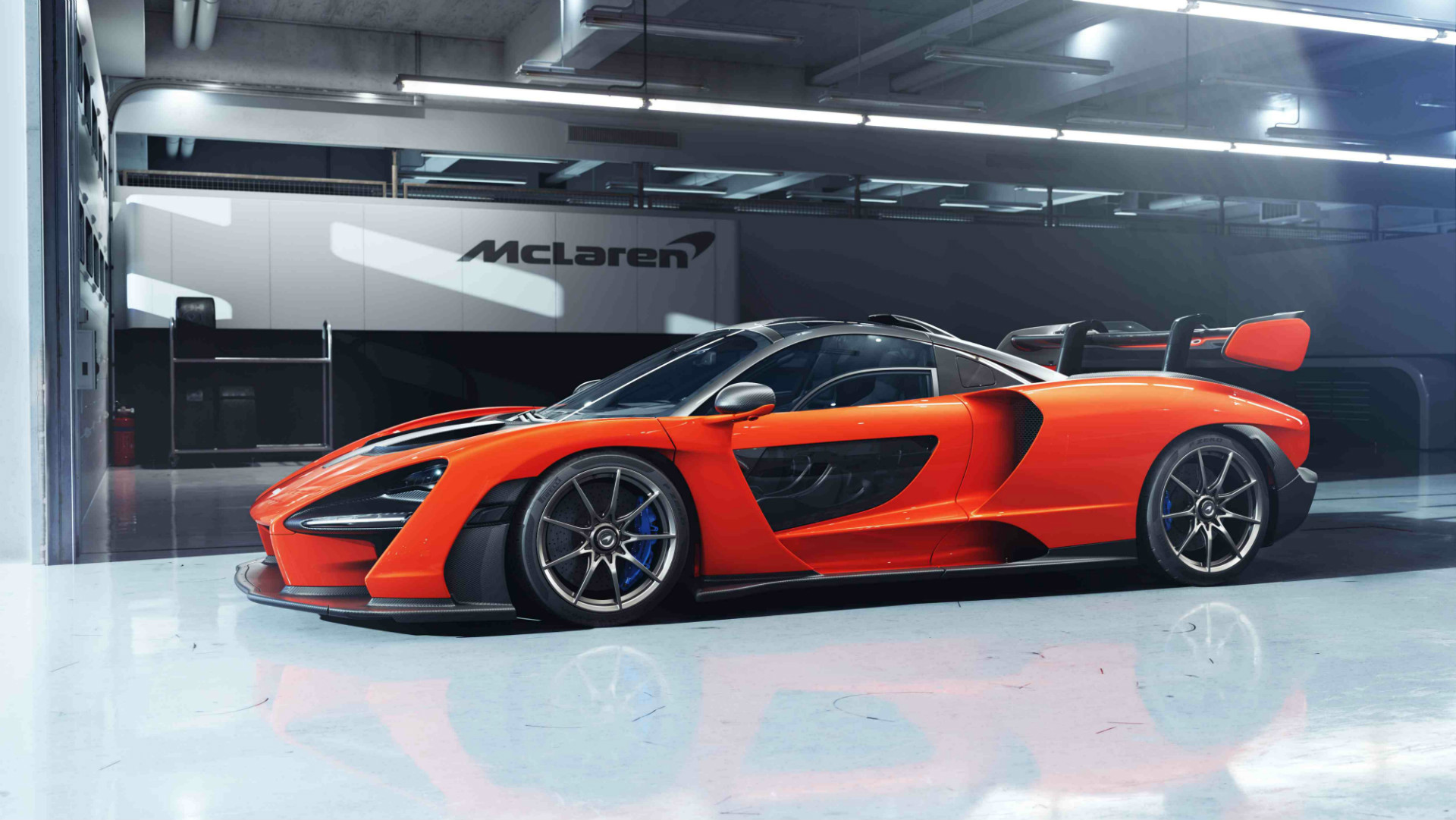

Before McLaren was ready to talk about its “Senna” hypercar, known for months to the public as “P15,” pictures of the car leaked through social media via the attendees of the company’s 2017 winter ball. Now, instead of dim twitter photos, we have studio quality photos from McLaren’s press release to share, as well as specifications, hot off the presses. The Senna is classified by McLaren as a part of its “Ultimate Series,” of which only the P1 and its variants were a part of until today. Named for the mythical Formula 1 driver, Ayrton Senna, whose legacy inspired an award-winning documentary, this Macca has one hell of a name to live up to.
Let us get the most important thing out of the way: availability. Even if you have the £750,000 (over $1 million USD) that McLaren demands for a Senna, you will not get one if you have not already been contacted by the Woking-based company.
Derived in part from the sublime 720S, the Senna is described by McLaren as having the stiffest monocoque of any of the company’s road-legal vehicles, whilst also being among the lightest, at 2,641 pounds (1,198 kilograms) sans driver and fluids.
The 4.0 liter, dry-sump M840TR V8 engine cranks out 789 horsepower and 590 lb-ft of torque with the aid of two twin-scroll turbochargers, making it the single punchiest internal combustion engine ever offered in a McLaren road car. Combining it with such a light chassis results in a power to weight ratio of 598 horsepower per ton, a single horse shy of the hybridized Ferrari LaFerrari.

All this power and lack of weight is prevented from doing a Dumbreck by a suite of active aerodynamics and hydraulic suspension, with the former system developed with such fervor that styling has been affected in a way some may consider unfavorable. The twin-element rear wing, sitting 48 inches from the road at its highest point, cooperates with the single-piece, double diffuser to keep the car’s rear end from slithering out, even under the effects of a bootful of throttle. A simplistic, albeit tremendous splitter maintains front-end adherence with the road, no matter what the driver does with the car’s electro-hydraulic steering.

The cabin, clad in either Alcantara or leather, is accessed through dihedral doors, like those seen on the McLaren F1. Said doors are constructed from carbon fiber, save for the windows, at both head and foot height, though carbon fiber fill-ins can be requested in lieu of glass. Storage space is restricted to a cubby aft of the passenger’s seat, said to have space for but a pair of helmets and Nomex suits. The steering wheel is button-free, its only controls being the paddles which actuate the car’s seven-speed seamless shift transmission, capable of operating automatically, or at the driver’s whim.

McLaren boasts that the car transmits low-frequency sound through unique engine mounts and that the cockpit, situated below the roof-mounted air intake, becomes a cocoon of sound.
Stopping power is delivered by carbon-ceramic disc brakes which McLaren describes as the most advanced ever fitted to any of its road cars. The force delivered through these brakes is prevented from locking the wheels under braking with Pirelli P Zero Trofeo R tires, mounted on motorsport-derived, single-lug alloy wheels.
McLaren will show off the Senna to the public at the 2018 Geneva International Motor Show in March.
